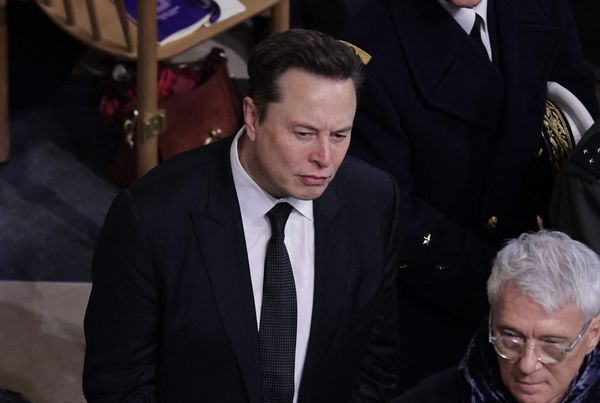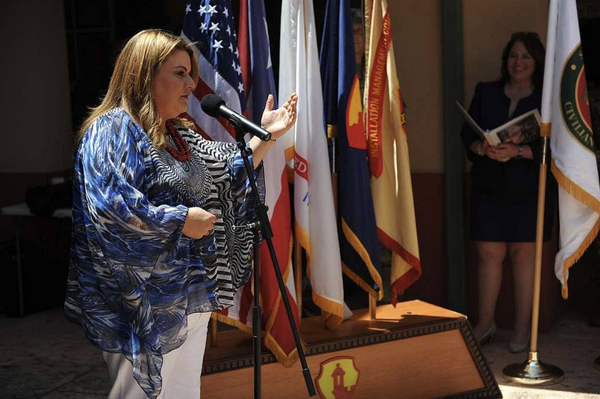California may be known as a climate leader, but when it comes to legislation to cut pollution and phase out fossil fuels, state lawmakers are largely resting on their laurels.
The state’s greenhouse gas reduction goals, once heralded as pioneering and ambitious, now lag other states and countries. California isn’t on track to meet even those outdated targets. And it’s been years since lawmakers have enacted major climate legislation on par with the landmark SB 32 in 2016.
Gov. Gavin Newsom has worked with legislators to set aside tens of billions of dollars of the state’s massive budget surplus and has taken administrative steps to support climate change goals. But he had not, until recently, pushed for new laws with tougher greenhouse gas targets and other mandates at the scale and pace needed to confront the climate crisis.
So in one sense it is encouraging to see Newsom release a five-point legislative proposal to get more aggressive on climate. But it’s hard to understand why the governor waited to propose such sweeping actions until only a few weeks before lawmakers adjourn for the year on Aug. 31.
His legislative wish list calls for increasing the state’s current requirement to cut greenhouse gas emissions 40% below 1990 levels by 2030 to 55% over the same period. He wants lawmakers to set interim benchmarks for the state to meet on a path to reaching its goal of getting 100% electricity sales from renewable and zero-carbon sources by 2045. And he is urging them to make the state’s 2045 goal of reaching carbon neutrality, or net zero emissions — originally set through an executive order by Gov. Jerry Brown — into a legally binding mandate the state would be required to achieve.
Newsom also wants bills to ban new oil and gas drilling within 3,200 feet of homes and schools. His administration is already working through the slow-moving regulatory process to adopt these health protections, but requiring them by law would make them less vulnerable to legal challenges from the oil industry.
The governor is also pitching legislation to establish guardrails around the technologies designed to get carbon dioxide out of the atmosphere by sucking it from the air or forcing it deep underground. Newsom’s proposal would prohibit enhanced oil recovery, a technique that uses pressurized carbon dioxide to flush out old, hard-to-reach crude and could actually be used to increase oil production.
Newsom’s support for a faster, more ambitious response to the climate crisis is meaningful and welcome. At the same time, it’s another 11th-hour effort to advance major decisions on energy and the environment, as the governor did in June with a polarizing energy bill that seeks to avoid blackouts, in part, by investing in fossil fuel infrastructure. Newsom took a similar, late-in-the-game approach with his controversial proposal to extend the life of California’s last remaining nuclear plant, a measure that is consuming much of the attention of lawmakers and their staff at a time when they could be working to pass these other pieces of his climate agenda.
That’s not a good way to make sweeping decisions about the future of the world’s fifth-largest economy and its transition from fossil fuels. Legislation of this scale should be crafted transparently over months, or by calling a special session to hash it out comprehensively, rather than rushing to jam it through at the last minute. But if the governor’s support helps advance even some of these climate objectives, legislators and advocates should work quickly to enshrine as much of it into law as possible.
The stakes get only higher as each passing year brings a new cascade of climate-fueled horrors, from destructive wildfires and deadly heat waves to severe drought. We are still not slashing fossil fuel emissions quickly enough to prevent catastrophic overheating of the planet, even with President Joe Biden’s signing of the Inflation Reduction Act, Congress’ biggest action yet on climate change. That means keeping global warming within tolerable levels will depend on states like California taking every opportunity to do more.
Environmental advocates and lawmakers are understandably frustrated by Newsom’s sudden push for these long-standing priorities. This is the same governor, after all, who stood on the sidelines as bills to accomplish some of these same objectives failed in the Legislature. Newsom’s absence left environmentalists and their champions in the Legislature on their own in a losing fight with the oil industry, labor unions and other powerful interests.
Although Newsom’s direct involvement is a good sign, it’s unclear why he is only now getting squarely behind these priorities. Some have suggested that it’s about getting back at the oil industry as part of a fight that has been playing out through dueling ads in Florida, that it’s in response to Congress passing historic climate legislation, that he’s trying outdo Biden’s emissions reduction targets or to further his rumored ambitions of running for president. The governor’s progressive environmental image has also suffered from his recently announced opposition to Proposition 30, an initiative on the November ballot that is bankrolled by ride-hailing company Lyft. The measure would tax the rich to help pay for electric vehicles, charging stations and other climate investments.
But Newsom’s motivations don’t ultimately matter. Climate action, even when it’s rushed for political ends, is infinitely better than accepting the status quo and leaving the habitability of our planet in peril. If Newsom and state lawmakers can find a way to deliver on his agenda, or even part of it, we all stand a better chance of a safer future.
Some of Newsom’s proposals could be accomplished through existing legislation, including SB 1020, which would set interim targets for renewable electricity; and AB 1395, which would codify California’s 2045 carbon neutrality goal, while ensuring that it’s achieved largely through direct emissions cuts rather than carbon offsets and other dubious measures. Some of the other proposals, including a tougher 2030 emissions target, oil and gas drilling setbacks and criteria for the use of carbon removal, capture and storage, are more divisive and will be tougher to get through the Legislature. But they are just as critically important to negotiate and pursue.
Setting a legal requirement to slash climate emissions by 55% by 2030 would help reestablish California as a global climate leader, in line with the ambitions of the European Union. Lawmakers can also do better than Newsom’s proposal for 3,200-foot drilling setbacks, which bans only new wells, and require a phaseout of existing oil and gas operations near homes and schools.
Lawmakers need to take advantage of this rare opportunity and adopt the big, bold measures the governor has laid out. There might not be another chance to avert climate catastrophe and reduce suffering today and for future generations.







